Java中List遍歷刪除元素remove()的方法
今天碰見根據條件進行list遍歷remove的問題,第一時間就是簡單for循環remove,只知道這么寫不行,不安全,可是為什么呢?你想過嗎?下面就關于List遍歷remove的問題,深挖一下!
一、幾種常見的遍歷方式
1、普通for循環

2、高級for循環

3、iterator和removeIf
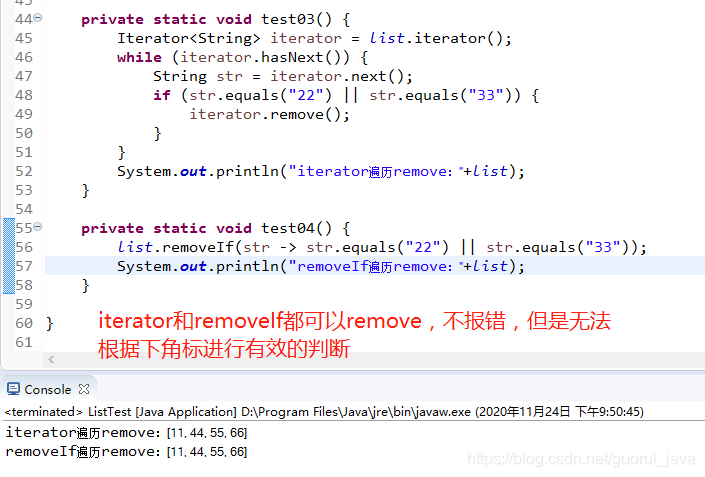
4、stream()

5、復制
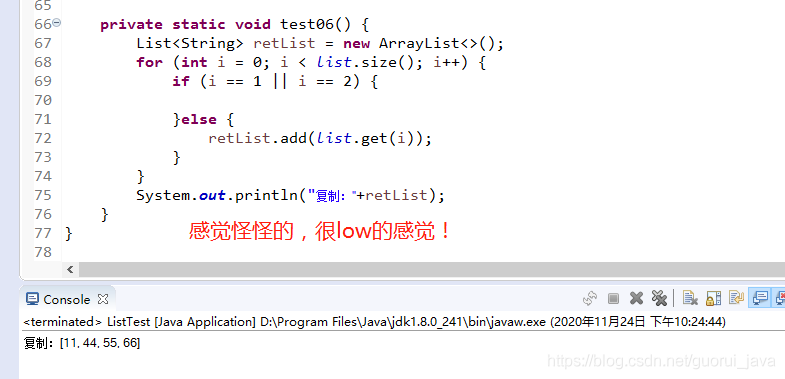
6、普通for循環 --> 倒序方式
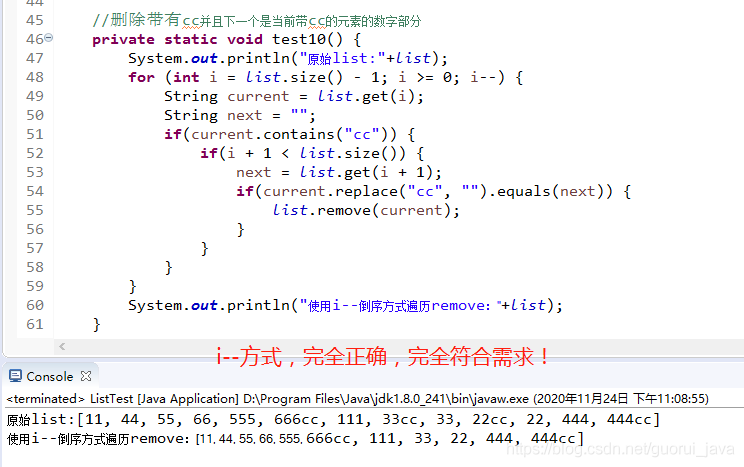
二、源碼篇
1、普通for循環出錯原因
public boolean remove(Object o) { if (o == null) { for (int index = 0; index < size; index++) if (elementData[index] == null) {fastRemove(index);return true; } } else { for (int index = 0; index < size; index++) if (o.equals(elementData[index])) {fastRemove(index);return true; } } return false;}
/* * Private remove method that skips bounds checking and does not * return the value removed. */private void fastRemove(int index) { modCount++; int numMoved = size - index - 1; if (numMoved > 0) //remove會導致之后的元素往前移動,而下標不改變時就會出現bug System.arraycopy(elementData, index+1, elementData, index, numMoved); elementData[--size] = null; // clear to let GC do its work}
我們在刪除某個元素后,list的大小發生了變化,這時候你的的索引也會發生變化,這時就會導致你在遍歷的時候漏掉某些元素。比如當你刪除第1個元素后,我們如果還是繼續根據索引訪問第2個元素時,因為刪除的關系,后面的元素都往前移動了一位,所以實際訪問的是第3個元素。所以這種方式可以用在刪除特定的一個元素時使用,但不適合循環刪除多個元素時使用。
2、高級for循環出錯原因
foreach其實是用迭代器來進行遍歷的,而在遍歷時直接使用arraylist的remove方法會導致什么問題呢?
可以再看一下fastremove和迭代器遍歷的內部代碼:
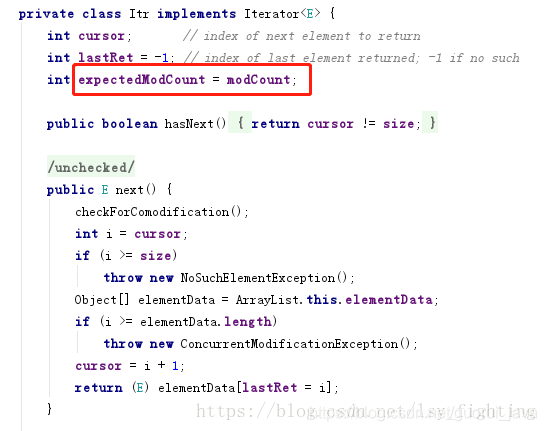
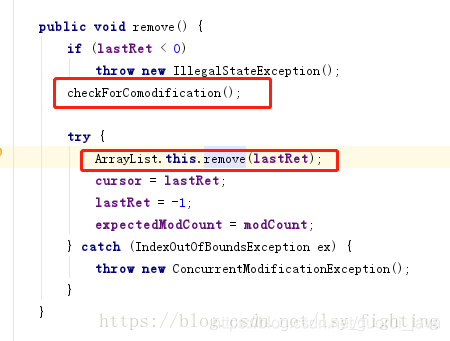
最后導致拋出上面異常的其實就是這個,簡單說,調用list.remove()方法導致modCount和expectedModCount的值不一致而報異常
final void checkForComodification() { if (modCount != expectedModCount) throw new ConcurrentModificationException();}//調用next時會調用checkForComodification方法檢查 這兩個字段//而fastRemove里面只對modCount 進行了改變 導致拋出異常public E next() { checkForComodification(); int i = cursor; if (i >= size) throw new NoSuchElementException(); Object[] elementData = ArrayList.this.elementData; if (i >= elementData.length) throw new ConcurrentModificationException(); cursor = i + 1; return (E) elementData[lastRet = i];}
所以遍歷時remove并不適用于foreach。
3、java8中新方法removeIf
//內部其實就是迭代器遍歷default boolean removeIf(Predicate<? super E> filter) { Objects.requireNonNull(filter); boolean removed = false; final Iterator<E> each = iterator(); while (each.hasNext()) { if (filter.test(each.next())) { each.remove(); removed = true; } } return removed;}
和迭代器差不多,內部實現也是迭代器。
三、總結
1、在不考慮內存大小會不會出現OOM的時候,采取復制一個新的list的方法速度更快,適用于集合中對象不算多的時候,畢竟只需要add操作。
2、當集合中元素過多時,復制list就顯得有些笨重了,采用迭代器的方式進行遍歷較快一些,并且不用關注小角標的變化。
3、不考慮性能的時候使用removeIf方法,代碼簡潔明了。
4、當要針對角標進行元素的remove時,使用倒序遍歷的方式最為妥當。
到此這篇關于Java中List遍歷刪除元素remove()的方法的文章就介紹到這了,更多相關Java List遍歷刪除元素內容請搜索好吧啦網以前的文章或繼續瀏覽下面的相關文章希望大家以后多多支持好吧啦網!
相關文章:

 網公網安備
網公網安備